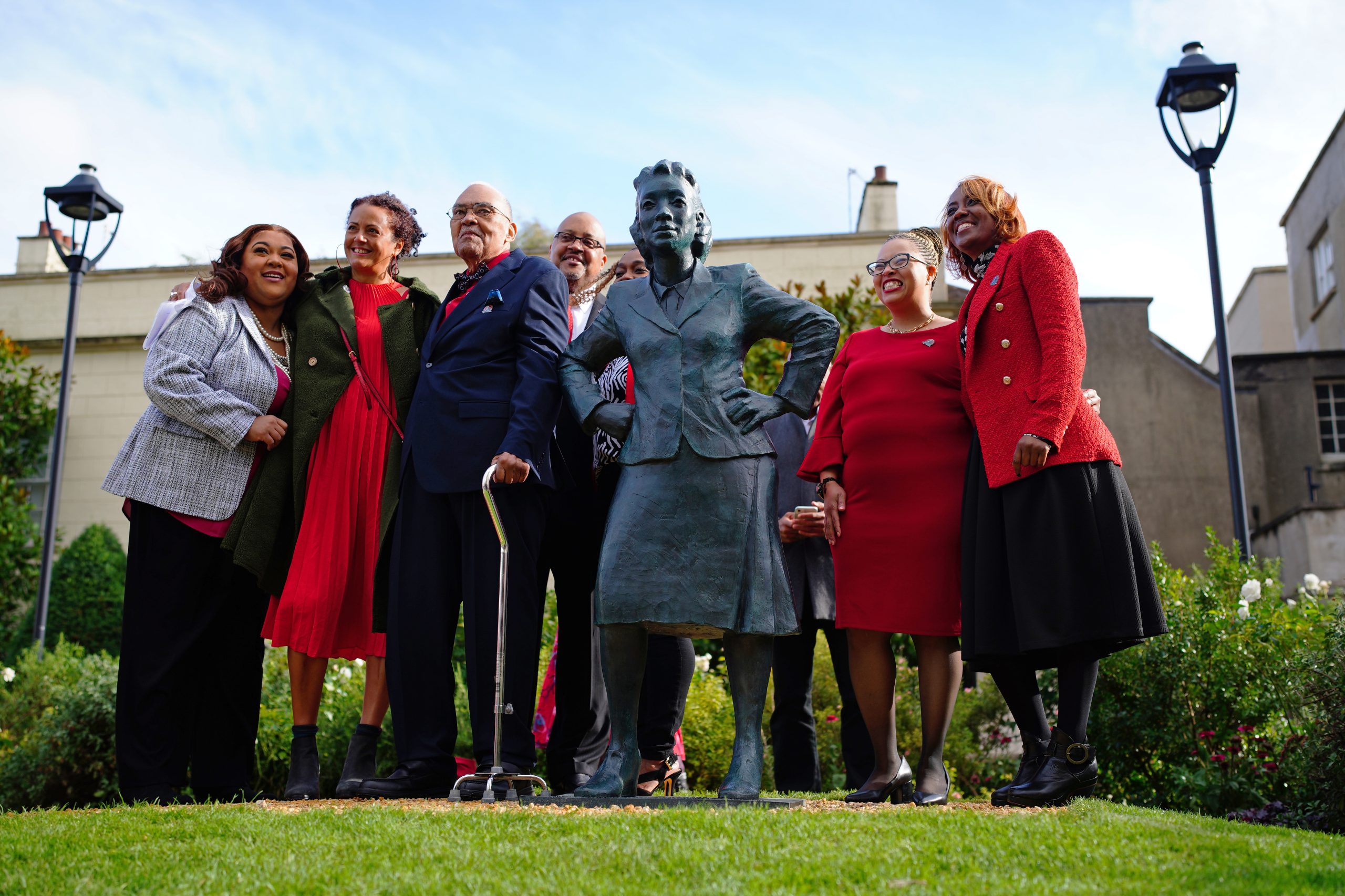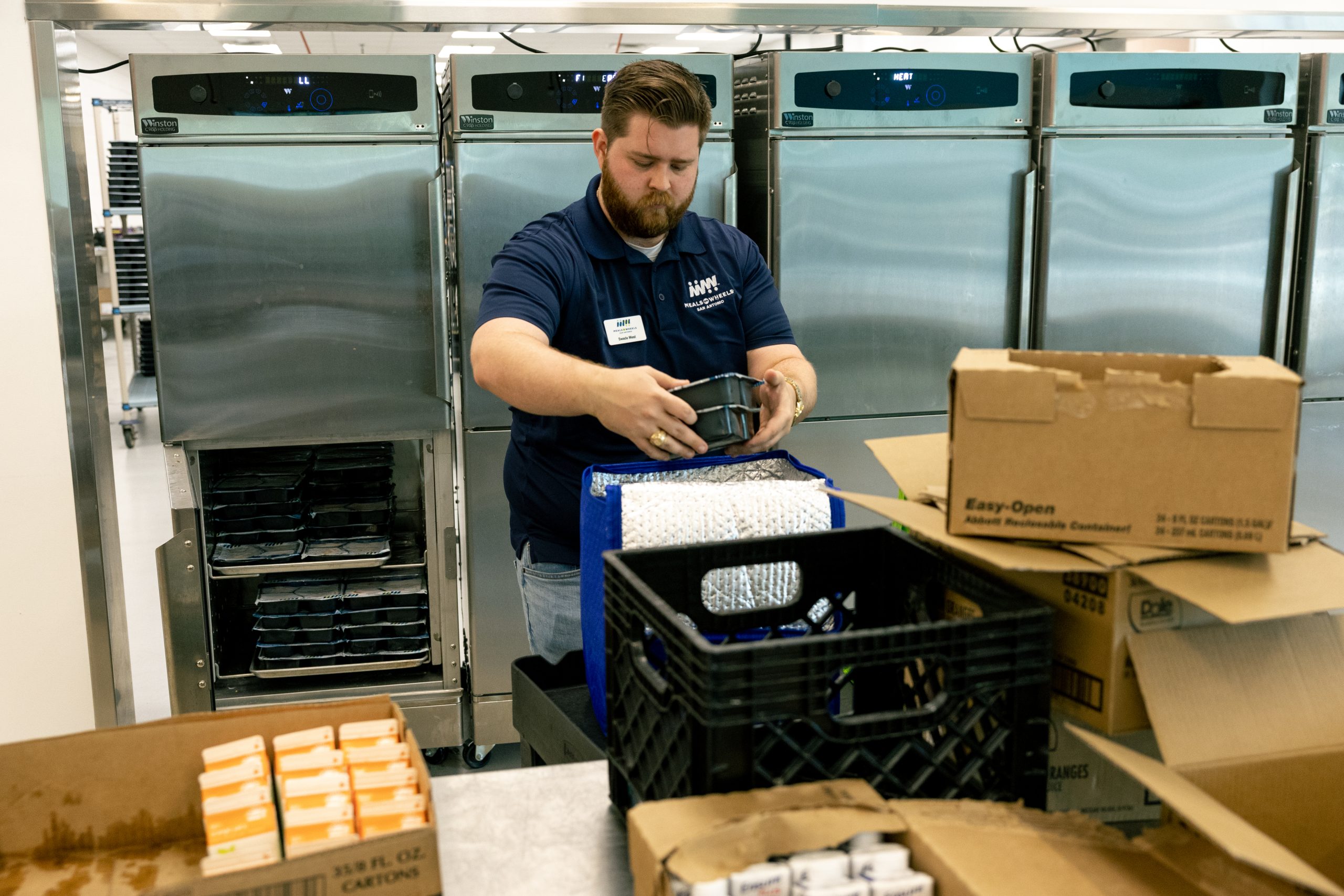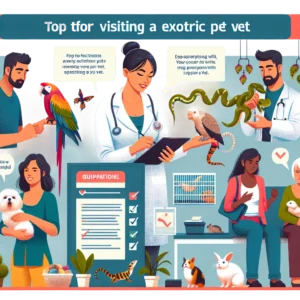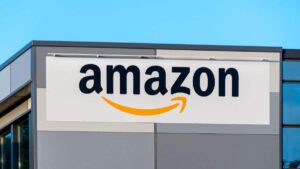South Side Hospital’S Pending Closure Sends Officials Scrambling to Fill Gaps
South Side Hospital is facing imminent closure, forcing officials to urgently address staffing and resource shortfalls. The impending closure of South Side Hospital has sparked a flurry of activity, as officials scramble to tackle the challenges presented by the loss of this vital healthcare facility.
With inadequate staff and resources, the closure prompts an urgent need for solutions to maintain quality care for the community. As the clock ticks, officials are racing against time to address the impending gaps and ensure a smooth transition for patients and employees alike.
This sudden turn of events underscores the critical need to address the underlying issues affecting healthcare accessibility and funding, as the closure threatens to disrupt the lives of countless individuals dependent on the hospital’s services. With such a formidable task at hand, it is essential for stakeholders to work collaboratively to find equitable solutions that preserve the well-being of the community.
The Impact Of South Side Hospital’S Pending Closure
South Side Hospital’s impending closure has sent officials into a scramble to find solutions and fill the gaps in healthcare services. Eager to mitigate the impact, they are working tirelessly to ensure the community still receives the care it needs.
South Side Hospital’s pending closure has sent officials into a state of urgency as they scramble to find solutions to fill the gaps left behind. The impact of this hospital closure will be far-reaching, affecting healthcare access and presenting numerous challenges for officials in the community.
Effects On Healthcare Access:
- Limited emergency services: With the closure of South Side Hospital, the community will experience a significant reduction in emergency healthcare services. This could result in longer wait times and increased strain on neighboring hospitals, which may struggle to accommodate the influx of patients.
- Decreased availability of specialized care: Many patients who relied on South Side Hospital for specialized services will face the challenge of finding alternative locations for their specific medical needs. This could lead to longer travel times and limited access to specialized treatments, negatively impacting patient outcomes.
- Disruption in continuity of care: For individuals who have established relationships with healthcare providers at South Side Hospital, the closure will disrupt their continuity of care. Transitioning to new doctors and medical facilities can be challenging and may result in delays in treatment or gaps in medical history.
- Impact on vulnerable populations: The closure of South Side Hospital could disproportionately affect vulnerable populations such as low-income individuals, the elderly, and those without reliable transportation. Limited access to healthcare services may lead to delayed diagnoses, worsening of chronic conditions, and a decline in overall health outcomes.
Challenges For Officials:
- Redistributing patient load: Officials will face the complex task of redistributing the patient load from South Side Hospital to other healthcare facilities in the area. This will require coordination and collaboration with various healthcare providers to ensure an equitable distribution of patients and resources.
- Workforce adjustment: With the closure of South Side Hospital, officials will need to address the impact on the hospital staff. Efforts will be necessary to provide support and assistance in finding employment or relocating to other healthcare facilities.
- Financial implications: The closure of a large medical institution like South Side Hospital will have significant financial implications for officials. Finding the necessary funding to support the redistribution of patients and ensure sufficient resources at other healthcare facilities will be a substantial challenge.
- Community engagement: Officials will need to engage with the community to gather input, address concerns, and provide updates on the healthcare situation. Effective communication will be crucial in maintaining trust and ensuring that residents have access to accurate information.
The pending closure of South Side Hospital will have a profound impact on healthcare access and pose numerous challenges for officials. The ripple effects on emergency services, specialized care, continuity of care, and vulnerable populations will require careful planning, collaboration, and community support to ensure that healthcare needs are met during this transition.
Healthcare Access In The South Side Community
The closure of South Side Hospital has sparked urgent efforts from officials to address healthcare access gaps in the community. Measures are being taken to ensure that residents of the South Side have access to necessary medical services.
The pending closure of South Side Hospital has raised concerns about healthcare access in the community. Let’s explore the current state of healthcare services and the role that South Side Hospital has played in meeting the community’s needs.
Current State Of Healthcare Services
- Limited healthcare facilities: The South Side community currently has limited healthcare facilities, with South Side Hospital being one of the primary providers. Its closure will create a significant gap in accessible healthcare options.
- Overcrowded healthcare centers: With the closure looming, existing healthcare centers in the area may become overcrowded, leading to longer waiting times for medical services.
- Increased travel distance: Residents will now have to travel longer distances to access healthcare services, potentially impacting those without easy access to transportation.
- Strain on emergency services: The closure of South Side Hospital will place additional strain on emergency services, as patients in need of immediate medical attention will need to be redirected to nearby hospitals.
Role Of South Side Hospital
- Comprehensive healthcare services: South Side Hospital has been a vital institution for the community, offering a wide range of healthcare services such as emergency care, specialized treatments, and outpatient services.
- Community-focused initiatives: Over the years, South Side Hospital has actively contributed to the well-being of the community through various health awareness programs, screenings, and educational initiatives.
- Employment opportunities: The closure of South Side Hospital not only affects the community’s healthcare access but also endangers the jobs of healthcare professionals employed at the facility.
- Collaborative partnerships: South Side Hospital has collaborated with local organizations and healthcare providers to ensure a holistic approach to healthcare, promoting community well-being.
- Loss of trusted healthcare provider: The closure of South Side Hospital will result in the loss of a trusted healthcare provider for the community, thereby impacting the continuity and familiarity of care for patients.
The pending closure of South Side Hospital poses a significant challenge to healthcare access in the South Side community. The limited healthcare facilities, increased travel distance, strain on emergency services, and other repercussions are causing officials to scramble for solutions.
It is crucial to address these gaps in healthcare access to ensure the well-being of the South Side community.
Implications Of The Hospital Closing
As officials scramble to mitigate the fallout from the pending closure of South Side Hospital, the community is left grappling with the implications of the loss. Efforts are underway to address the resulting gaps in healthcare services and ensure the well-being of residents.
South Side Hospital’s Pending Closure Sends Officials Scrambling to Fill Gaps
In the wake of the impending closure of South Side Hospital, officials have been thrust into a state of urgency, working tirelessly to address the numerous implications that come with the shutdown. This unexpected turn of events has left the community grappling with the potential consequences and searching for alternatives.
In this section, we will explore two crucial implications resulting from the hospital’s closure, namely the increased pressure on nearby hospitals and the lack of specialty medical services available.
Increased Pressure On Nearby Hospitals
- Nearby hospitals will face an influx of patients, leading to an overwhelming demand for care.
- Longer wait times and overcrowding are inevitable repercussions of this sudden surge in volume.
- Resource allocation will become a challenge as hospitals struggle to meet the heightened healthcare demands.
- The strain on healthcare staff will intensify, which may compromise the quality and efficiency of care provided.
- Limited bed capacity at neighboring hospitals will exacerbate the situation, potentially leading to delays in patient admissions.
Lack Of Specialty Medical Services
- Specialized medical services previously offered at South Side Hospital will be unavailable, resulting in a significant loss for the community.
- Patients with specific healthcare needs will be forced to seek treatment at more distant facilities.
- Accessing specialized care will become increasingly difficult for those with transportation limitations, particularly the elderly and low-income individuals.
- The absence of specialized services may result in delayed diagnoses and suboptimal treatment outcomes for patients.
- The loss of specialty services also means that local healthcare providers will need to refer their patients to external facilities, disrupting continuity of care and causing inconvenience for both patients and providers.
The impending closure of South Side Hospital brings about significant implications that must be urgently addressed by officials. As neighboring hospitals face the strain of increased patient volumes, long wait times and resource allocation challenges become unavoidable. Additionally, the lack of specialty medical services will necessitate patients to seek care at distant facilities, causing hurdles for those with limited access to transportation.
It is crucial for the community and officials to work together to find effective solutions to mitigate the impact of this closure and ensure continued access to quality healthcare services.
Addressing The Gaps In Healthcare
South Side Hospital’s impending closure has prompted authorities to urgently address gaps in healthcare provision. Efforts are underway to find suitable alternatives and ensure the uninterrupted delivery of essential services in the area.
South Side Hospital’s impending closure has created a frantic scramble among officials to address the resulting gaps in healthcare. With the loss of this vital healthcare facility, it is crucial to find alternative solutions and mobilize community resources to ensure that residents in the area have continued access to healthcare services.
In this section, we will explore potential solutions for accessing care and how the community can come together to bridge these gaps in healthcare.
Mobilizing Community Resources:
- Collaborate with local community health centers, clinics, and medical practitioners to provide additional services and support.
- Explore partnerships with nonprofit organizations to establish temporary clinics or mobile healthcare units in underserved areas.
- Engage community leaders and volunteers to raise awareness, organize fundraising events, and gather resources to support healthcare initiatives.
- Develop educational programs to empower community members to take charge of their health and well-being.
- Foster partnerships with local schools and universities to encourage healthcare professionals-in-training to serve in the community.
- Implement telemedicine platforms to expand access to healthcare services, especially for residents who may face transportation challenges.
- Establish support networks to assist vulnerable populations, such as the elderly or low-income individuals, in accessing healthcare resources and navigating the healthcare system.
Potential Solutions For Accessing Care:
- Expand the existing capacity of neighboring healthcare facilities to accommodate the influx of patients.
- Enhance transportation options to ensure that residents can easily reach healthcare facilities outside the immediate area.
- Advocate for additional government funding to support new or existing healthcare resources in the community.
- Encourage healthcare providers to offer extended hours of operation to accommodate patients who may have difficulty accessing care during regular office hours.
- Develop innovative healthcare delivery models, such as telehealth services, to provide remote care options for patients unable to physically visit a healthcare facility.
- Work with insurance providers to ensure that residents have affordable, accessible healthcare coverage.
- Promote preventative care initiatives and emphasize the importance of regular check-ups and screenings to catch health issues early on.
The pending closure of South Side Hospital has undoubtedly caused a disruption in the healthcare landscape. However, by mobilizing community resources and collectively exploring potential solutions, officials and community members can work together to address the gaps in healthcare and ensure that residents continue to receive the care they need.
By leveraging partnerships, innovative approaches, and a focus on community empowerment, the South Side community can overcome these challenges and pave the way for a healthier future for all.
The Role Of Government And Local Officials
Officials are working urgently to address the gaps left by the impending closure of South Side Hospital, emphasizing the crucial role of government and local authorities. Their efforts aim to ensure that residents have access to necessary healthcare services and facilities.
South Side Hospital’S Pending Closure Sends Officials Scrambling to Fill Gaps
South Side Hospital serves as a crucial healthcare provider for the local community. However, the recent announcement of its impending closure has sent shockwaves through the area. As a result, government officials and local representatives are under pressure to find solutions that will adequately address the gaps left behind.
We will explore the role of these elected officials in responding to this healthcare crisis and the initiatives taken by public health departments.
Pressure On Elected Representatives
- The closure of South Side Hospital has created an urgent situation that requires immediate attention from elected representatives.
- They are facing mounting pressure from the public, who are demanding swift action to ensure the community’s healthcare needs are met.
- These officials are expected to take charge, provide reassurance, and strategize to mitigate the potential negative impacts of the hospital’s closure.
- The community looks to them to advocate for accessible and affordable healthcare options.
Response From Public Health Departments
- Public health departments play a key role in responding to the closure of South Side Hospital and addressing the resulting gaps in healthcare services.
- They are responsible for assessing the impact of the closure on the community and implementing necessary measures to meet the healthcare needs of the affected population.
- Public health departments collaborate with elected officials to develop viable solutions, such as establishing temporary clinics or partnering with other nearby healthcare providers.
- They work closely with community organizations and stakeholders to ensure that vulnerable populations are not left underserved during this transition period.
The pending closure of South Side Hospital has placed significant pressure on elected representatives and public health departments to find alternative healthcare solutions for the community. Acting as advocates for their constituents, these officials must navigate the challenges created by the closure and ensure that the healthcare needs of the community are met.
By collaborating and strategizing, they can work towards minimizing the negative impact and implementing effective solutions.
Developing Emergency Plans
Officials are scrambling to develop emergency plans to address the impending closure of South Side Hospital, ensuring that vital healthcare services are not compromised.
South Side Hospital’s pending closure has sparked panic among officials as they scramble to find solutions to fill the gaps in healthcare services. With emergency care being a critical aspect, developing emergency plans is of utmost importance. In this section, we will explore two key areas in the emergency planning process: Coordinating with Emergency Medical Services and Ensuring Continuity of Emergency Care.
Coordinating With Emergency Medical Services
Coordinating with Emergency Medical Services (EMS) is vital to ensure a seamless response during emergencies. Here are some key considerations:
- Establishing a strong partnership with local EMS agencies: Forge strong relationships with nearby EMS agencies to create a coordinated approach in emergency situations.
- Regular communication and updates: Maintain open lines of communication with EMS providers to exchange information, share updates, and discuss any changes in emergency protocols.
- Joint training exercises: Conduct joint training exercises with EMS teams to enhance coordination, improve response times, and address any potential challenges that may arise during emergencies.
- Sharing resources and information: Collaborate with EMS agencies to share resources, such as equipment and personnel, to optimize emergency response capabilities.
- Continuous evaluation and improvement: Regularly review and assess emergency response procedures in collaboration with EMS partners to identify areas for improvement and implement necessary changes.
Ensuring Continuity Of Emergency Care
In the face of South Side Hospital’s closure, ensuring the continuity of emergency care is crucial. Consider the following measures:
- Redistributing patients and resources: Develop a plan to redistribute patients and resources to nearby hospitals or healthcare facilities to ensure uninterrupted emergency care.
- Strengthening nearby emergency departments: Work closely with neighboring healthcare institutions to bolster their emergency departments and equip them to handle increased patient load effectively.
- Enhancing emergency preparedness protocols: Revise and reinforce existing emergency preparedness protocols to account for the potential influx of patients and the need for expanded resources.
- Collaboration with local clinics and urgent care centers: Establish partnerships with local clinics and urgent care centers to offer alternative options for non-life-threatening emergencies and avoid overwhelming the remaining emergency departments.
- Public education and awareness campaigns: Conduct public education campaigns to inform residents about the impending changes, highlight alternative emergency care options, and promote preparedness in the event of an emergency.
By coordinating with EMS and ensuring continuity of emergency care, officials can strive to mitigate the impact of South Side Hospital’s closure and provide the necessary healthcare services during critical situations. It is crucial to continuously evaluate and refine emergency plans to adapt to evolving circumstances and guarantee the well-being of the community.
Advocating For New Healthcare Facilities
South Side Hospital’s imminent closure has prompted officials to take urgent measures in order to address the resulting healthcare gap, emphasizing the need for new facilities to support the local community.
South Side Hospital’s pending closure has left officials scrambling to find solutions to fill the gaps in healthcare services. The closure of a hospital is a significant loss for any community, as it impacts the accessibility and quality of healthcare available to residents.
This unfortunate situation calls for immediate action and collaborative efforts to advocate for new healthcare facilities. In this section, we will explore two key aspects of this advocacy: collaborating with other healthcare providers and potential strategies for hospital reopenings.
Collaborating With Other Healthcare Providers:
- Forming partnerships: Seeking collaboration with existing healthcare providers in the area can help fill the gaps created by the hospital’s closure. By joining forces, resources can be shared, and a coordinated approach can be implemented to ensure the delivery of essential healthcare services.
- Establishing satellite clinics: Collaborating with other healthcare providers to establish satellite clinics can help bring healthcare services closer to the affected community. These clinics can offer an array of primary care and specialized services, ensuring that residents have access to immediate medical attention.
- Sharing expertise and resources: By collaborating, healthcare providers can share their expertise and resources to bridge the gaps left by the closed hospital. This could involve sharing medical equipment, clinical expertise, or even pooling funds to provide necessary services to the community.
- Creating referral networks: Establishing referral networks between healthcare providers can ensure a streamlined process for patients in need of specialized care. Through these networks, patients can be efficiently referred to the appropriate providers, reducing delays and ensuring timely treatments.
Potential Strategies For Hospital Reopenings:
- Engaging community support: Garnering community support is crucial in the advocacy for hospital reopenings. By highlighting the impact of the closure on the community’s healthcare needs, it can generate public pressure and support for reopening the hospital.
- Lobbying with government officials: Engaging with government officials at local, state, and federal levels is essential to advocate for funding and policy changes that would facilitate hospital reopenings. Collaborating with legislators and making a compelling case for the necessity of a healthcare facility in the community can lead to positive outcomes.
- Attracting private investments: Exploring opportunities for private investments can provide the necessary financial backing to revive hospital operations. Attracting investors who understand the importance of healthcare services and their potential profitability can be instrumental in reopening the closed hospital.
- Exploring alternative healthcare models: Reopening the hospital may involve exploring alternative healthcare models, such as partnerships with healthcare systems or converting the facility into a specialized healthcare center. By adapting to changing healthcare needs and exploring innovative approaches, the potential for reopening the hospital can be maximized.
Collaboration among healthcare providers and the implementation of strategic advocacy can strengthen efforts to address the closure of South Side Hospital and ensure the provision of essential healthcare services to the affected community. By rallying support, engaging with government officials, attracting investments, and considering alternative healthcare models, the path towards reopening the hospital can be paved.
Only through concerted efforts and the determination to prioritize the well-being of the community can the gaps created by the closure be effectively filled.
Supporting The South Side Community
The impending closure of South Side Hospital has created urgency among officials to find solutions and support the affected community. Efforts are underway to fill the gaps and ensure the well-being of residents in this area.
South Side Hospital’s pending closure has sent officials into a frenzy as they scramble to fill the gaps in healthcare services for the community. The closure not only affects the hospital staff but also brings about concerns regarding access to quality healthcare for the residents of the South Side.
In this section, we will explore the initiatives aimed at supporting the South Side community during this challenging time.
Community Involvement And Engagement
- Local organizations and community leaders have stepped up to rally support for the South Side community, recognizing the urgent need to ensure access to healthcare services. They have initiated various programs to engage community members and address their healthcare concerns.
- Collaborative efforts between healthcare providers, nonprofits, and community members work towards finding alternative healthcare solutions, ensuring that basic medical needs are met for the people of the South Side.
- Public forums and town hall meetings have provided platforms for community members to voice their concerns, share their experiences, and contribute ideas for bridging the healthcare gaps.
- Increased communication and information sharing between healthcare providers and the community have helped promote transparency, keeping residents informed about the ongoing efforts to secure temporary healthcare options.
- Partnerships with neighboring hospitals and clinics have been established to provide additional healthcare services temporarily. These partnerships aim to minimize the impact of the closure and ensure that critical medical care remains accessible for the South Side community.
- Efforts are underway to recruit additional healthcare professionals to meet the increasing demand created by the hospital closure. This includes outreach and recruitment campaigns targeting healthcare professionals who specialize in serving underserved communities.
- Community health fairs and awareness campaigns have been organized to provide information on available healthcare resources, prevention measures, and the importance of regular check-ups for maintaining a healthy lifestyle.
- Mental health support services have been prioritized to address the emotional toll the closure may have on the community. Counseling services, support groups, and hotlines are being established to provide necessary assistance to individuals affected by the changes.
- Volunteer organizations are actively engaging community members to provide support in various capacities, such as transportation assistance, language interpretation, and navigating the healthcare system.
- Sustainable long-term solutions are being explored in collaboration with community members, aiming to ensure that the South Side has a reliable and comprehensive healthcare infrastructure that meets the needs of its residents.
Providing Temporary Healthcare Options:
- Mobile healthcare clinics have been deployed to serve as temporary healthcare facilities, enabling medical professionals to provide essential healthcare services to residents within the South Side community.
- Urgent care centers and walk-in clinics have extended their hours to accommodate the increased demand for medical services due to the hospital closure. These centers offer a range of services, from routine check-ups to minor emergency care.
- Telehealth services have been expanded to facilitate remote consultations, enabling patients to connect with healthcare providers virtually. This option ensures that individuals can access medical advice, prescriptions, and follow-up care without physically visiting a healthcare facility.
- Ambulatory centers have been established to provide outpatient services, reducing the need for hospitalization and allowing patients to receive specialized care closer to their homes.
- Community-based health education programs have been implemented to promote preventive care and equip individuals with the knowledge necessary to manage chronic conditions effectively.
These temporary healthcare options aim to bridge the gap left by the imminent closure of South Side Hospital, ensuring that the South Side community continues to receive essential healthcare services during this challenging period. Through community involvement and innovative solutions, efforts are being made to support the South Side community’s healthcare needs.
Education And Outreach
South Side Hospital’s imminent closure has spurred urgent efforts from officials to bridge the resulting educational and outreach gaps.
South Side Hospital’s pending closure has left officials grappling with the urgent need to address the gaps in healthcare services. One crucial aspect of this endeavor is education and outreach to the community. In order to ensure that the residents are well-informed and prepared for the changes ahead, the following strategies will be implemented:
Informing The Community About Alternative Care Locations:
- Direct Mail Campaign: A comprehensive direct mail campaign will be launched to inform residents about the alternative care locations available in close proximity to the South Side Hospital. This will include detailed information about the services offered at each facility, as well as any specific eligibility requirements or appointment procedures.
- Community Meetings: Public meetings will be arranged to address any concerns or questions that the community may have. Representatives from the alternative care locations will be present to provide detailed information and clarify any doubts. These meetings will be designed to facilitate an open dialogue and ensure that residents feel confident in their ability to access the healthcare services they require.
- Website Updates: The hospital’s website will be extensively updated to prominently feature information about alternative care locations. This will include clear directions, contact information, and updated service listings to help the community easily find the care they need. Additionally, an interactive map will be incorporated to provide a visual representation of the available options.
Educating On Emergency Medical Services:
- Community Workshops: Educational workshops will be conducted to equip residents with the knowledge and skills required to handle emergency medical situations. These workshops will cover topics such as basic first aid, CPR, recognizing signs of a medical emergency, and steps to take before the arrival of emergency medical services.
- Collaboration with Local Schools: Partnerships will be established with local schools to integrate healthcare education into their curriculum. This will include age-appropriate lessons on emergency preparedness, healthcare basics, and the importance of seeking medical assistance when necessary. By targeting students, their families will indirectly become more knowledgeable about emergency medical services.
- Information Pamphlets: To reach a wider audience, informative pamphlets about emergency medical services will be distributed throughout the community. These pamphlets will provide essential information about when to call emergency services, what to expect during an emergency response, and how to access medical assistance in different situations.
Education and outreach efforts are pivotal in ensuring a smooth transition for the community following the closure of South Side Hospital. By proactively informing residents about alternative care locations and educating them on emergency medical services, officials aim to minimize any disruptions in healthcare access and empower the community to make well-informed decisions about their healthcare needs.

Credit: sanantonioreport.org
Addressing Healthcare Disparities
South Side Hospital’s imminent closure has triggered urgent efforts by officials to address healthcare disparities and ensure continuity of care in the affected area. The closure has prompted a scramble to find alternative solutions and fill crucial gaps in healthcare services.
South Side Hospital’S Pending Closure Sends Officials Scrambling To Fill Gaps
The pending closure of South Side Hospital has created a state of urgency among officials as they seek ways to address the healthcare disparities that will arise from this unfortunate event. The closure of a healthcare facility inevitably leaves behind gaps in medical services and access to care, particularly for vulnerable populations.
In this section, we will explore the importance of equitable access to healthcare and discuss strategies for reducing disparities.
Importance Of Equitable Access To Healthcare
Equitable access to healthcare ensures that every individual, regardless of their socioeconomic status, race, or geographic location, has equal opportunities to receive appropriate medical care when needed. It is crucial in promoting a fair and just society, where everyone has a chance at a healthy life.
Here are some key reasons why equitable access to healthcare is of utmost importance:
- Promotes overall health and well-being for all individuals, reducing the burden of preventable diseases and chronic conditions.
- Fosters social cohesion by minimizing health disparities between different groups in society, leading to a more inclusive and harmonious community.
- Enhances productivity and economic growth as healthier individuals contribute to the workforce and society at large.
- Upholds human rights principles, recognizing that healthcare is a fundamental right that should be accessible to all.
Strategies For Reducing Disparities
Addressing healthcare disparities requires comprehensive strategies that target the root causes of unequal access to care. By proactively implementing the following measures, we can work towards creating a more equitable healthcare system:
- Improving healthcare infrastructure: Investing in new medical facilities, particularly in underserved areas, can help address the shortage of healthcare resources and reduce geographical barriers to access.
- Increasing healthcare workforce diversity: Encouraging a diverse healthcare workforce can ensure that patients receive culturally competent care and feel more comfortable seeking help. This can be achieved through scholarship programs and specialized training initiatives.
- Expanding health insurance coverage: Implementing policies that expand access to affordable health insurance can significantly reduce financial barriers to healthcare services.
- Strengthening community outreach and education: Engaging with communities and providing accessible health education can empower individuals to make informed decisions about their health and seek appropriate care when needed.
- Prioritizing preventive care and early intervention: Emphasizing preventive measures, such as regular check-ups and screenings, can help identify and address health issues before they become chronic and more challenging to treat.
By focusing on equitable access to healthcare and implementing these strategies, we can mitigate the effects of South Side Hospital’s closure and work towards a more equitable and inclusive healthcare system for all. Together, we can ensure that no one is left behind when it comes to accessing quality medical care.
Frequently Asked Questions Of South Side Hospital’S Pending Closure Sends Officials Scrambling To Fill Gaps
What Are The Reasons For South Side Hospital’S Pending Closure?
The pending closure of South Side Hospital is due to financial constraints and declining patient numbers. Budget cuts and changes in healthcare policies have also contributed to the decision.
How Will The Pending Closure Of South Side Hospital Impact The Community?
The closure of South Side Hospital will have a significant impact on the community, leaving residents with limited healthcare options. It will create a gap in medical services, making it challenging for patients to access quality care in the area.
What Steps Are Officials Taking To Address The Gaps Created By The Pending Closure?
Officials are actively working to fill the gaps left by the pending closure of South Side Hospital. They are exploring partnerships with neighboring hospitals, implementing outreach programs, and seeking funding opportunities to ensure continued access to healthcare services in the community.
Conclusion
As South Side Hospital faces the imminent threat of closure, officials are left scrambling to find solutions to fill the resulting gaps in healthcare services. The hospital’s closure will undoubtedly have a significant impact on the community, particularly for those who rely on its services.
Faced with this challenge, officials must act swiftly and strategically to ensure that alternative options are available to meet the healthcare needs of the affected population. This situation highlights the importance of proactive planning and investment in the healthcare infrastructure to avoid such crises in the future.
Through collaboration between government bodies, healthcare organizations, and community leaders, it is possible to mitigate the effects of the hospital’s closure and ensure access to quality healthcare services for all. A long-term solution necessitates ongoing attention to healthcare system sustainability and a commitment to meeting the healthcare needs of underserved communities.
By addressing these challenges head-on, officials can shape a more resilient and equitable healthcare system for the future.













Post Comment